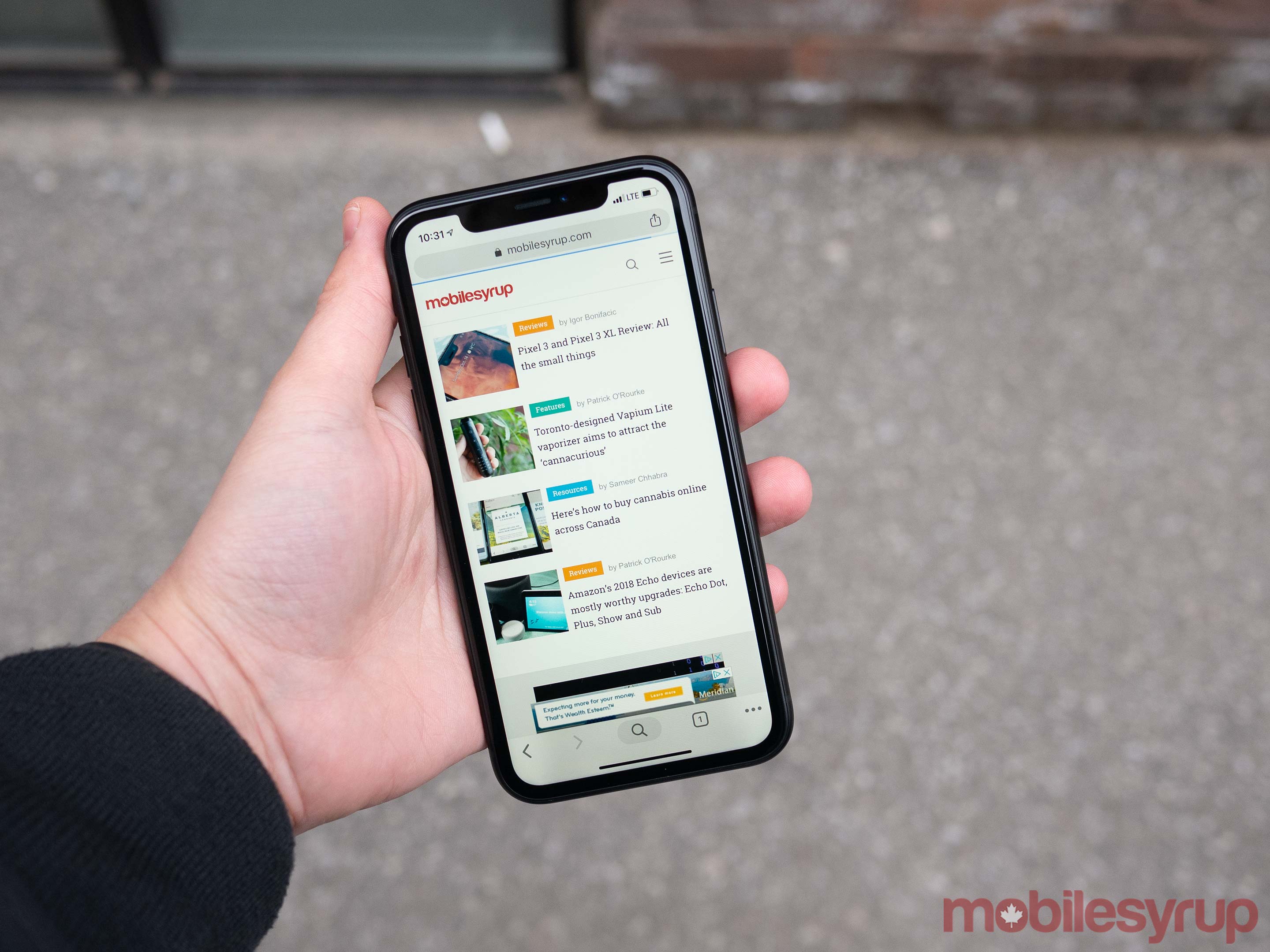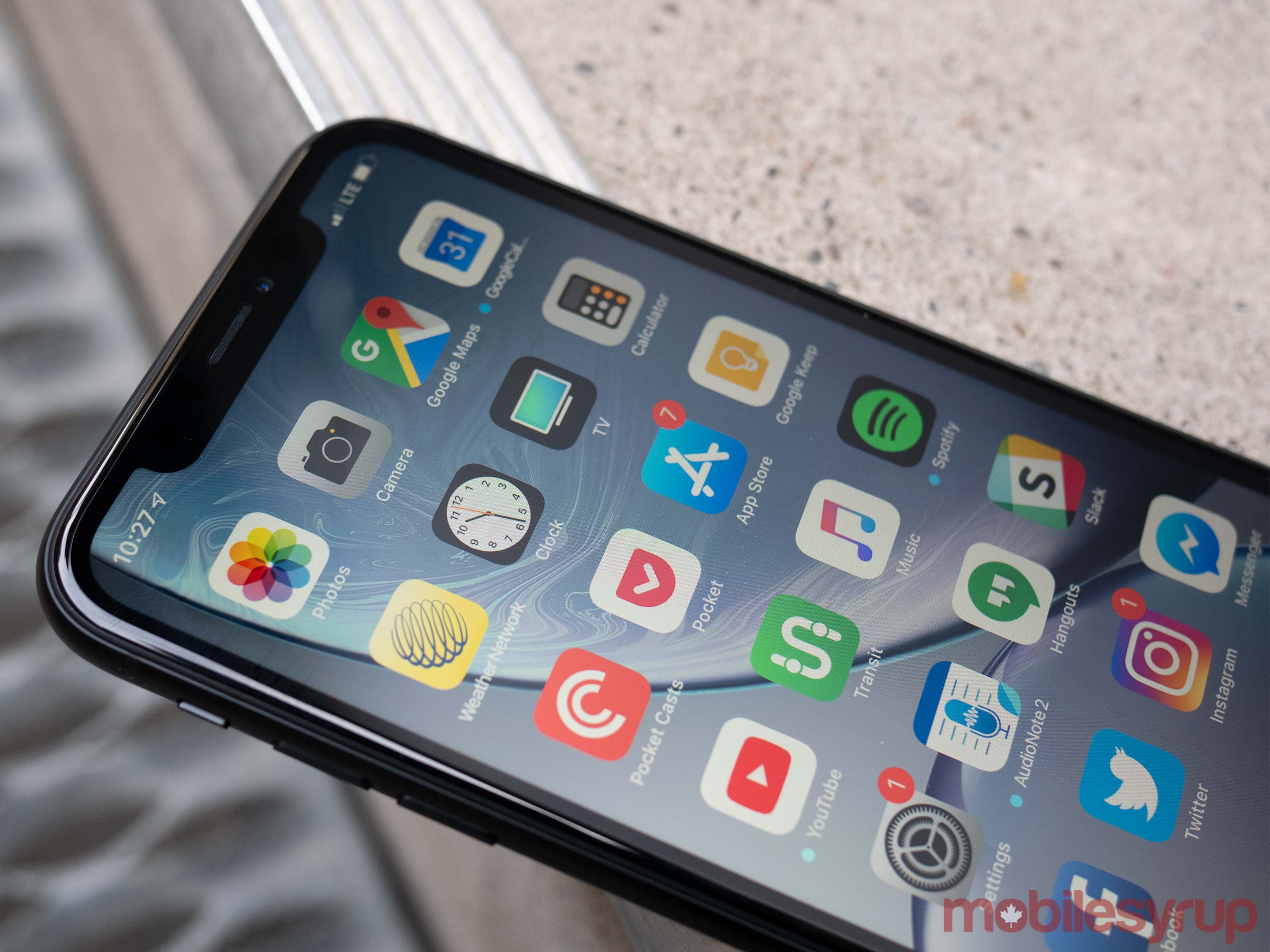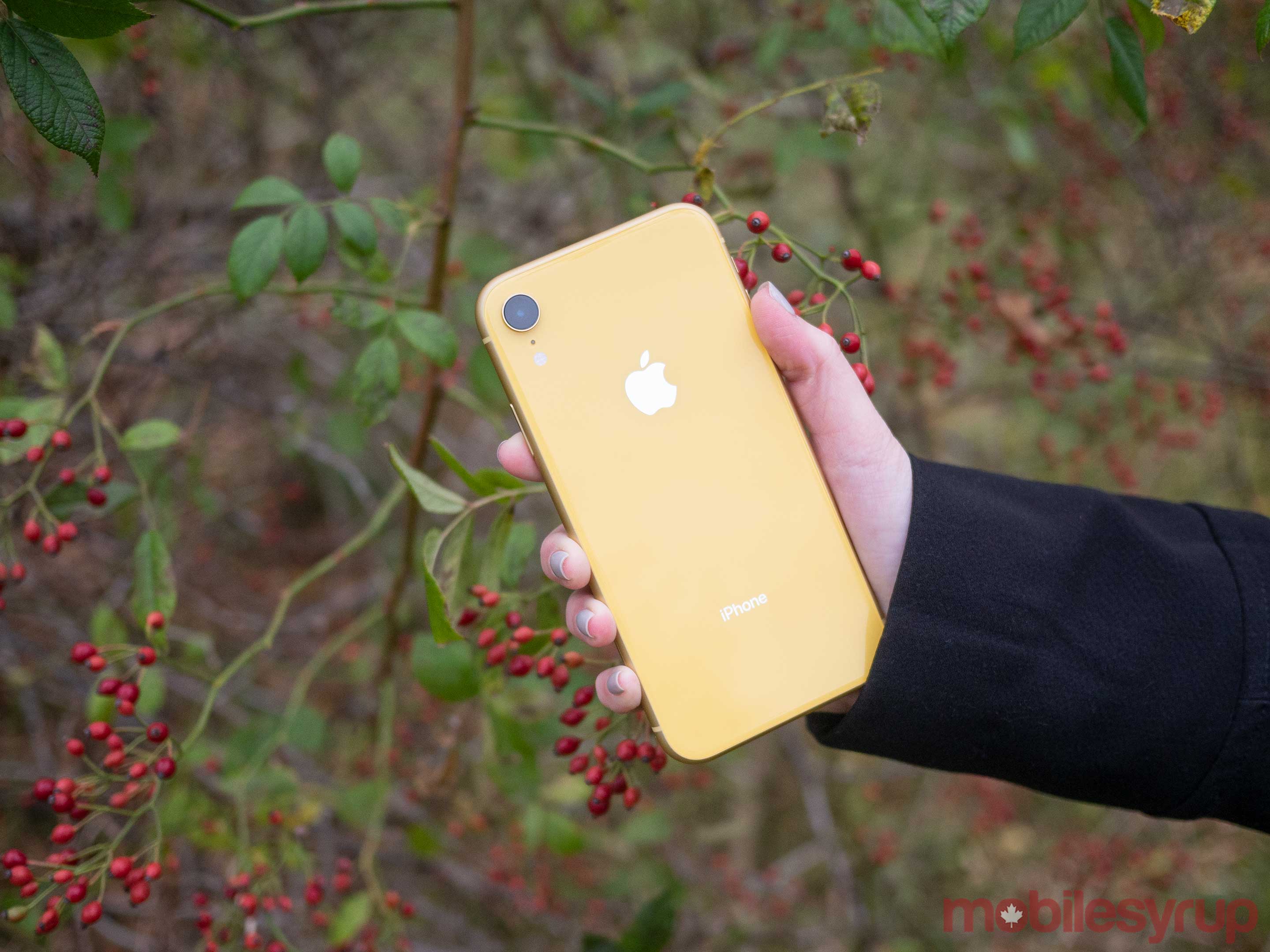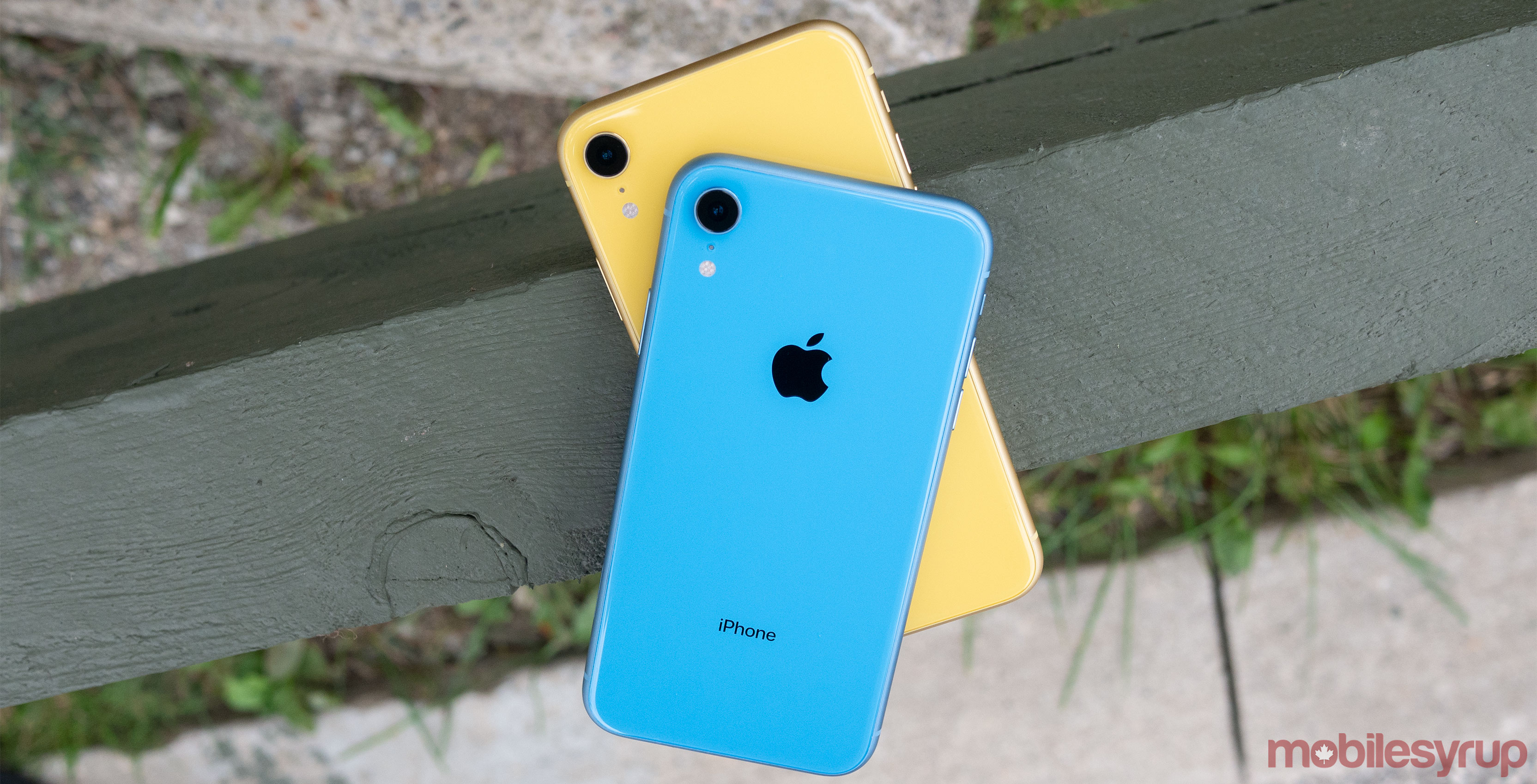
The Pros
- Bright colours standout
- Includes most of the iPhone XS' best features
- Build quality is impressive
The Cons
- Still expensive
- Lack of 1080p display is dissapointing
- Some will miss 2x camera zoom
The iPhone XR isn’t a budget smartphone.
According to Apple, it’s also not the successor to the poorly received iPhone 5C — though in some sense, it undeniably is.
While many, including even Apple in some instances, have referred to the iPhone XR as the company’s latest entry-level smartphone, the device is more than capable in terms of performance.
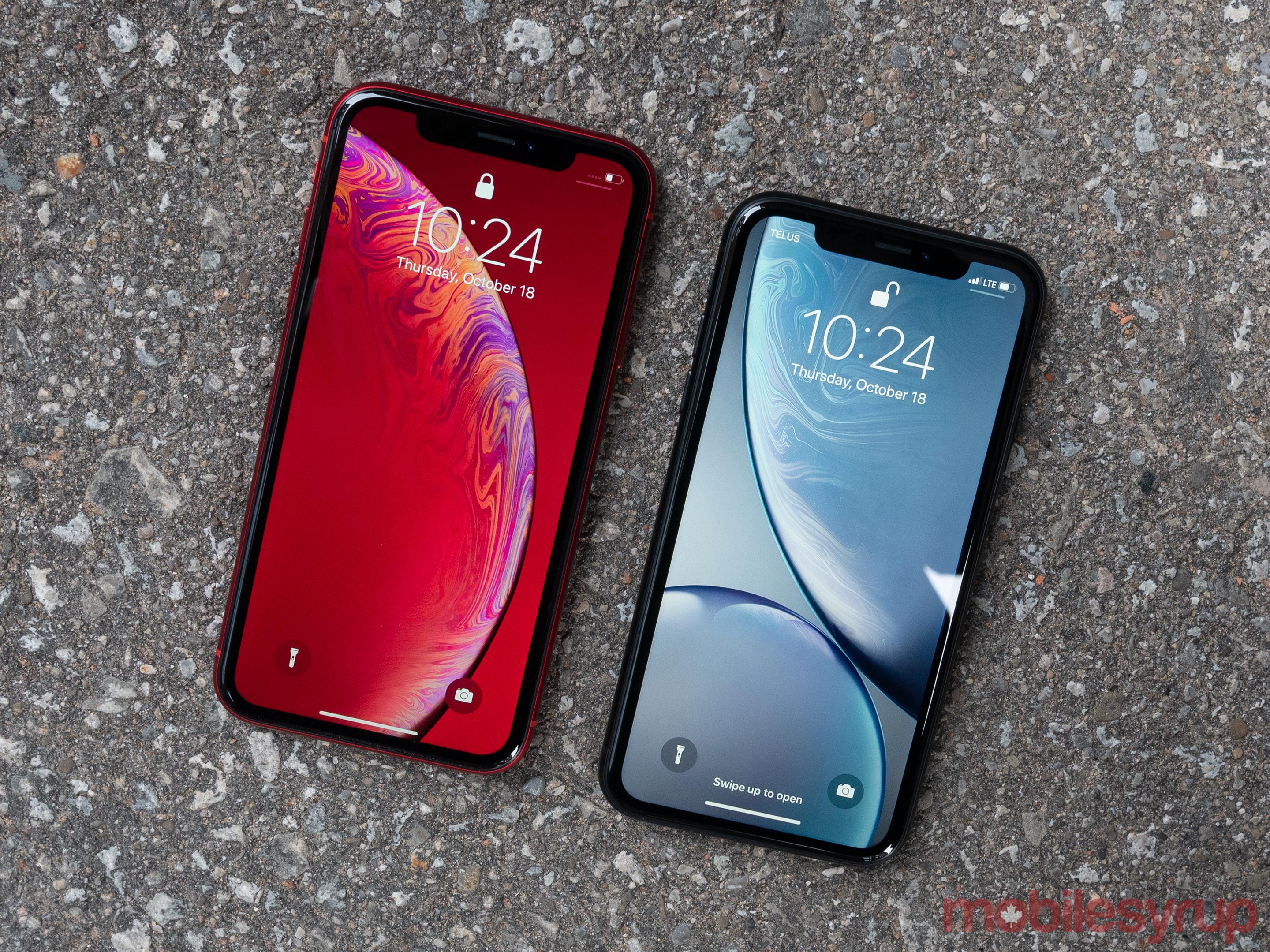
I’d even go so far as to say that the iPhone XR is the smartphone the average Apple user should purchase if they’re considering buying a new iPhone, rather than the now year-old iPhone 8, or the considerably more expensive iPhone XS.
The XR offers a premium experience capable of going head-to-head with most high-end devices in the categories that matter to regular consumers.
It’s only in the specific specs most consumers likely aren’t aware of that the XR lags behind the iPhone XS and recently released Android devices like Google’s Pixel 3.
iPhone XR
iPhone XS Max
iPhone XS
Display
6.1-inch, LCD Liquid Retina display, 1792 x 828 pixels
6.5-inch, OLED True Tone display, 2688 x 1242 pixels, HDR 10, Dolby Vision
5.8-inch, OLED True Tone display, 2436 x 1125 pixels, HDR 10, Dolby Vision
Processor
A12 Bionic chip
A12 Bionic chip
A12 Bionic chip
RAM
3GB of RAM
4GB
4GB
Storage
64GB, 128GB, 256GB
64GB, 256GB, 512GB
64GB, 256GB, 512GB
Dimensions (in.)
150.9mm x 75.7mm x 8.3mm
157.5mm x 77.4mm x 7.7mm
143.6mm x 70.9mm x 7.7mm
Weight
194g
208g
177g
Rear Facing Camera
12-megapixel (f/1.8, OIS, wide angle)
12-megapixel (f/1.8, OIS, wide angle) + 12-megapixel (f/2.4, OIS, telephoto), quad-LED 'True Tone' flash
12-megapixel (f/1.8, OIS, wide angle) + 12-megapixel (f/2.4, OIS, telephoto), quad-LED 'True Tone' flash
Front Facing Camera
7-megapixel (f/2.2)
7-megapixel (f/2.2)
7-megapixel (f/2.2)
OS
iOS 12
iOS 12
iOS 12
Battery
Up to 16 hours of video playback
3,174mAh
2,658mAh
Network Connectivity
GSM / HSPA / LTE / Band 66
GSM / HSPA / LTE / Band 66
GSM / HSPA / LTE / Band 66
Sensors
TrueDepth Camera Sensor, Face ID, accelerometer, gyro, proximity, compass, barometer
TrueDepth Camera Sensor, Face ID, accelerometer, gyro, proximity, compass, barometer
TrueDepth Camera Sensor, Face ID, accelerometer, gyro, proximity, compass, barometer, Bluetooth 5.0
SIM Type
Nano SIM, eSIM
Nano SIM, eSIM
Nano SIM, eSIM
Launch Date
October 27, 2018
September 21, 2018
September 12, 2018
Misc
Colours: White, Black Blue, Coral, Yellow, Product Red | IP67 water/dust resistant
Colours: Gold, Black, Space Grey | Glass front and back, IP68 water/dust resistant, ARKit 2, AR Quick Look, Adjustable field of depth
Colours: Gold, Black, Space Grey | Glass front and back, IP68 water/dust resistant, ARKit 2, AR Quick Look, Adjustable field of depth
Display
iPhone XR
6.1-inch, LCD Liquid Retina display, 1792 x 828 pixels
iPhone XS Max
6.5-inch, OLED True Tone display, 2688 x 1242 pixels, HDR 10, Dolby Vision
iPhone XS
5.8-inch, OLED True Tone display, 2436 x 1125 pixels, HDR 10, Dolby Vision
Processor
iPhone XR
A12 Bionic chip
iPhone XS Max
A12 Bionic chip
iPhone XS
A12 Bionic chip
RAM
iPhone XR
3GB of RAM
iPhone XS Max
4GB
iPhone XS
4GB
Storage
iPhone XR
64GB, 128GB, 256GB
iPhone XS Max
64GB, 256GB, 512GB
iPhone XS
64GB, 256GB, 512GB
Dimensions (in.)
iPhone XR
150.9mm x 75.7mm x 8.3mm
iPhone XS Max
157.5mm x 77.4mm x 7.7mm
iPhone XS
143.6mm x 70.9mm x 7.7mm
Weight
iPhone XR
194g
iPhone XS Max
208g
iPhone XS
177g
Rear Facing Camera
iPhone XR
12-megapixel (f/1.8, OIS, wide angle)
iPhone XS Max
12-megapixel (f/1.8, OIS, wide angle) + 12-megapixel (f/2.4, OIS, telephoto), quad-LED 'True Tone' flash
iPhone XS
12-megapixel (f/1.8, OIS, wide angle) + 12-megapixel (f/2.4, OIS, telephoto), quad-LED 'True Tone' flash
Front Facing Camera
iPhone XR
7-megapixel (f/2.2)
iPhone XS Max
7-megapixel (f/2.2)
iPhone XS
7-megapixel (f/2.2)
OS
iPhone XR
iOS 12
iPhone XS Max
iOS 12
iPhone XS
iOS 12
Battery
iPhone XR
Up to 16 hours of video playback
iPhone XS Max
3,174mAh
iPhone XS
2,658mAh
Network Connectivity
iPhone XR
GSM / HSPA / LTE / Band 66
iPhone XS Max
GSM / HSPA / LTE / Band 66
iPhone XS
GSM / HSPA / LTE / Band 66
Sensors
iPhone XR
TrueDepth Camera Sensor, Face ID, accelerometer, gyro, proximity, compass, barometer
iPhone XS Max
TrueDepth Camera Sensor, Face ID, accelerometer, gyro, proximity, compass, barometer
iPhone XS
TrueDepth Camera Sensor, Face ID, accelerometer, gyro, proximity, compass, barometer, Bluetooth 5.0
SIM Type
iPhone XR
Nano SIM, eSIM
iPhone XS Max
Nano SIM, eSIM
iPhone XS
Nano SIM, eSIM
Launch Date
iPhone XR
October 27, 2018
iPhone XS Max
September 21, 2018
iPhone XS
September 12, 2018
Misc
iPhone XR
Colours: White, Black Blue, Coral, Yellow, Product Red | IP67 water/dust resistant
iPhone XS Max
Colours: Gold, Black, Space Grey | Glass front and back, IP68 water/dust resistant, ARKit 2, AR Quick Look, Adjustable field of depth
iPhone XS
Colours: Gold, Black, Space Grey | Glass front and back, IP68 water/dust resistant, ARKit 2, AR Quick Look, Adjustable field of depth
As a result, the iPhone XR’s bright colours are not going to convince staunch Android users to make the jump to iOS, though I’d argue this isn’t the goal of Apple’s latest smartphone.
The iPhone XR is aimed at those already deeply invested in Apple’s ecosystem, but that are currently using an older iPhone — be it iPhone 6, iPhone 6s, iPhone 7 or older. They want a new device but also aren’t interesting in shelling out the cash for the iPhone XS or iPhone XS Max.
With this in mind, despite the iPhone XR’s obvious technical shortcomings, the phone’s multi-layer colourful glass design and solid aluminum frame are stunning, and more importantly in the increasingly crowded smartphone market, unique.
The look
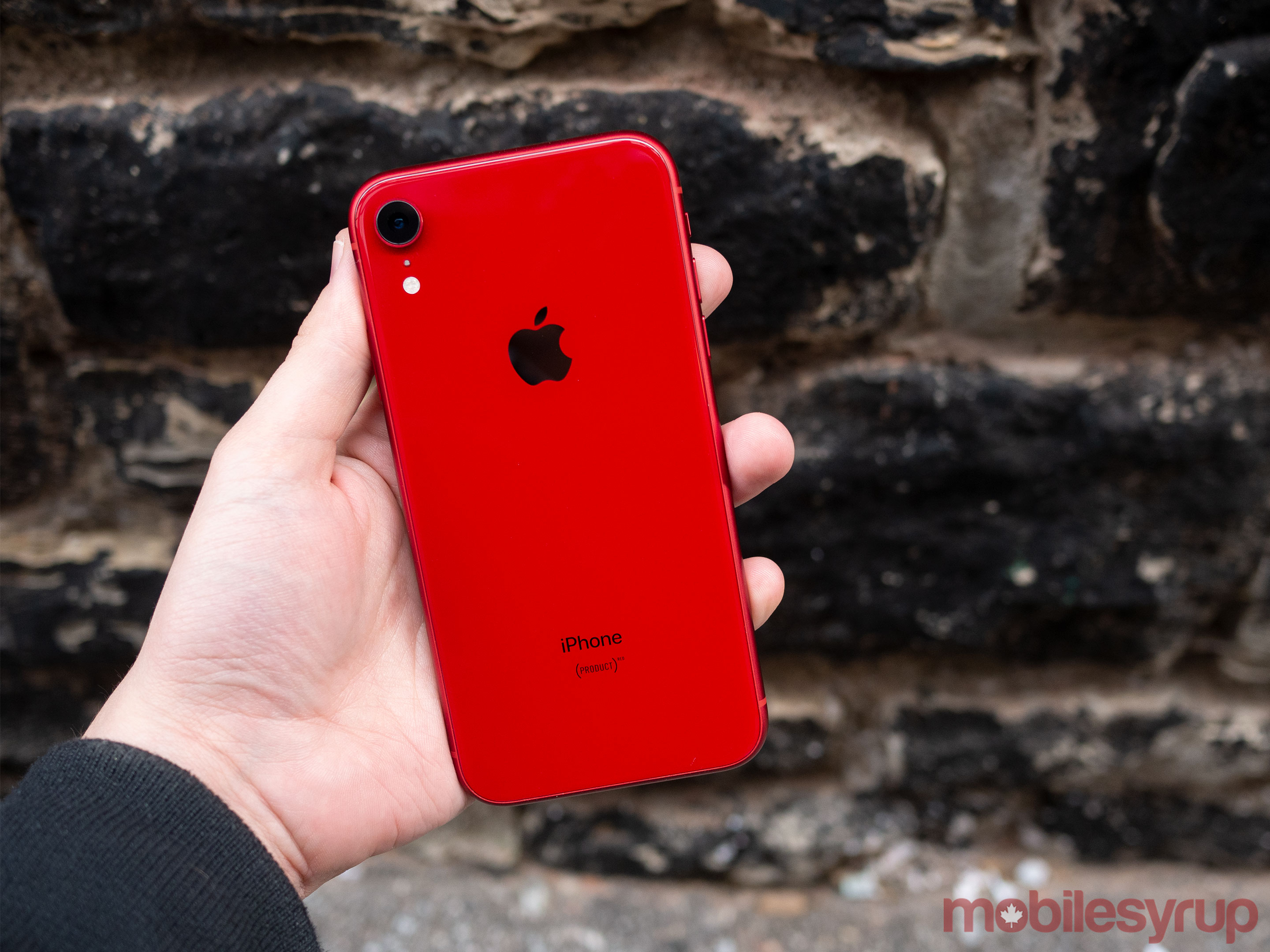
At the outset, the iPhone XR resembles a clever combination of design cues borrowed from the iPhone XS and the older iPhone 8.
The first thing most people will notice about the XR are the various colours it’s available in: ‘Coral,’ ‘White,’ ‘Black,’ ‘Product Red,’ ‘Yellow,’ and of course, ‘Blue.’ Each colour is eye-catching, with Black being the least interesting and Yellow coming in as my personal favourite.
Over the last few weeks, I’ve had the opportunity to spend time with the XR’s Black, Product Red, Blue, and Yellow variants.
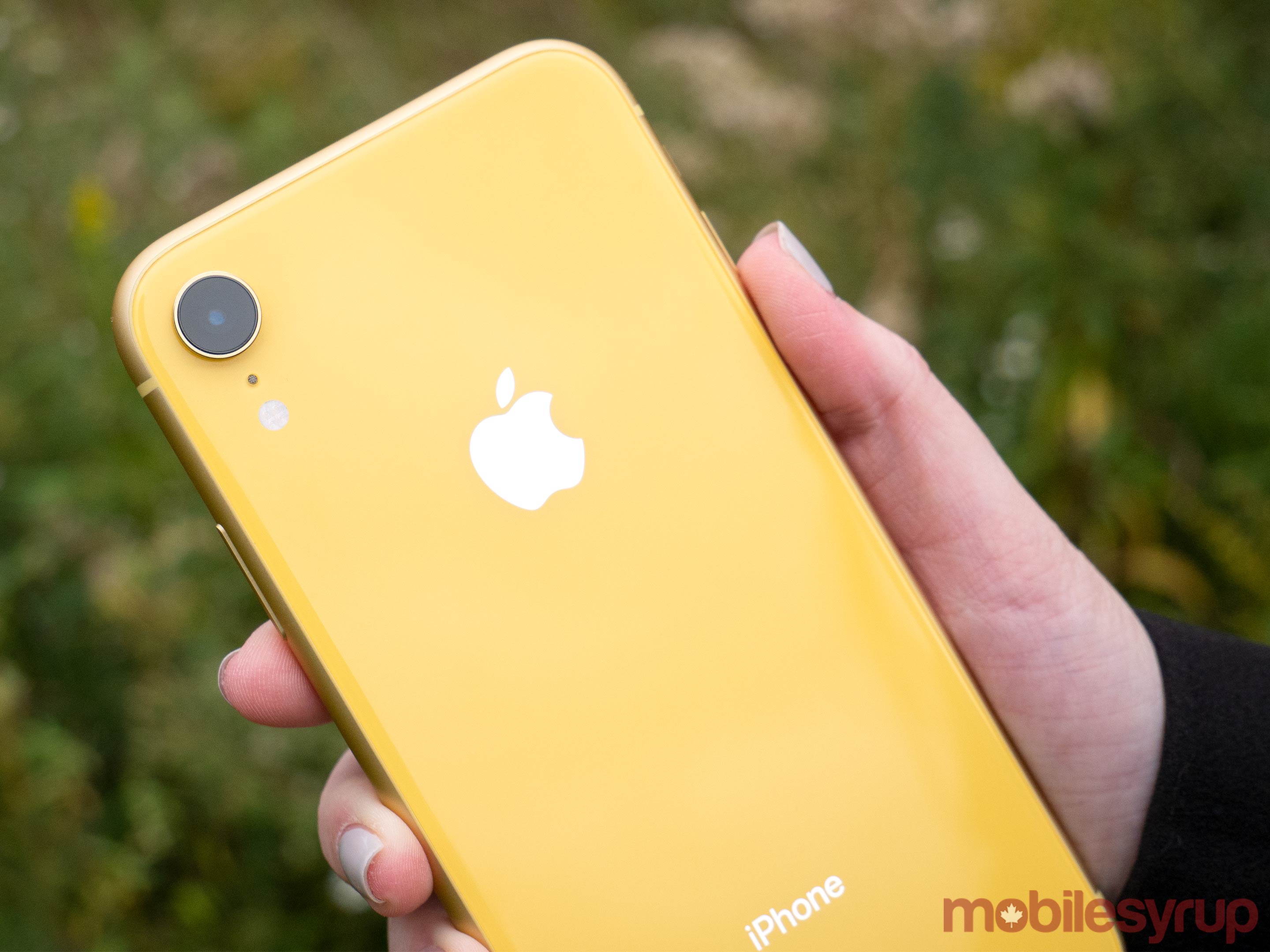
There’s a level of vibrancy to the XR’s colour that I haven’t seen before in a smartphone, let alone other tech devices, thanks to what Apple calls the smartphone’s “seven-layer colour process.”
The hue of each variant is also slightly different from what I’d typically expect of a given colour, resulting in a saturated pastel tone that evokes a 1970’s era tint that’s deep yet subdued.
The phone’s aluminum sides, which Apple claims are ‘aerospace-grade,’ are overlayed to compliment the colour of the XR’s bright rear glass. While the sides lack the sheen of the iPhone XS’ aluminum, chrome-looking edges, they feel more durable than the construction featured in Apple’s highest-end smartphone — though it remains to be seen how resistant to scratches they are.
According to Apple, the phone also features the same durable all-glass front and rear as the iPhone XS and iPhone XS Max. This means that just like the XS, the XR remains a magnet for fingerprints and smudges, though they’re slightly less noticeable as a result of the handset’s various colours.
Of course, Touch ID has once again been nixed with the XR, in favour of Apple’s Face ID authentication technology. This means that the XR also features a display notch to accommodate the phone’s TrueDepth camera system. As with the XS and X before it, the XR’s notch fades into the background after a few hours of use.
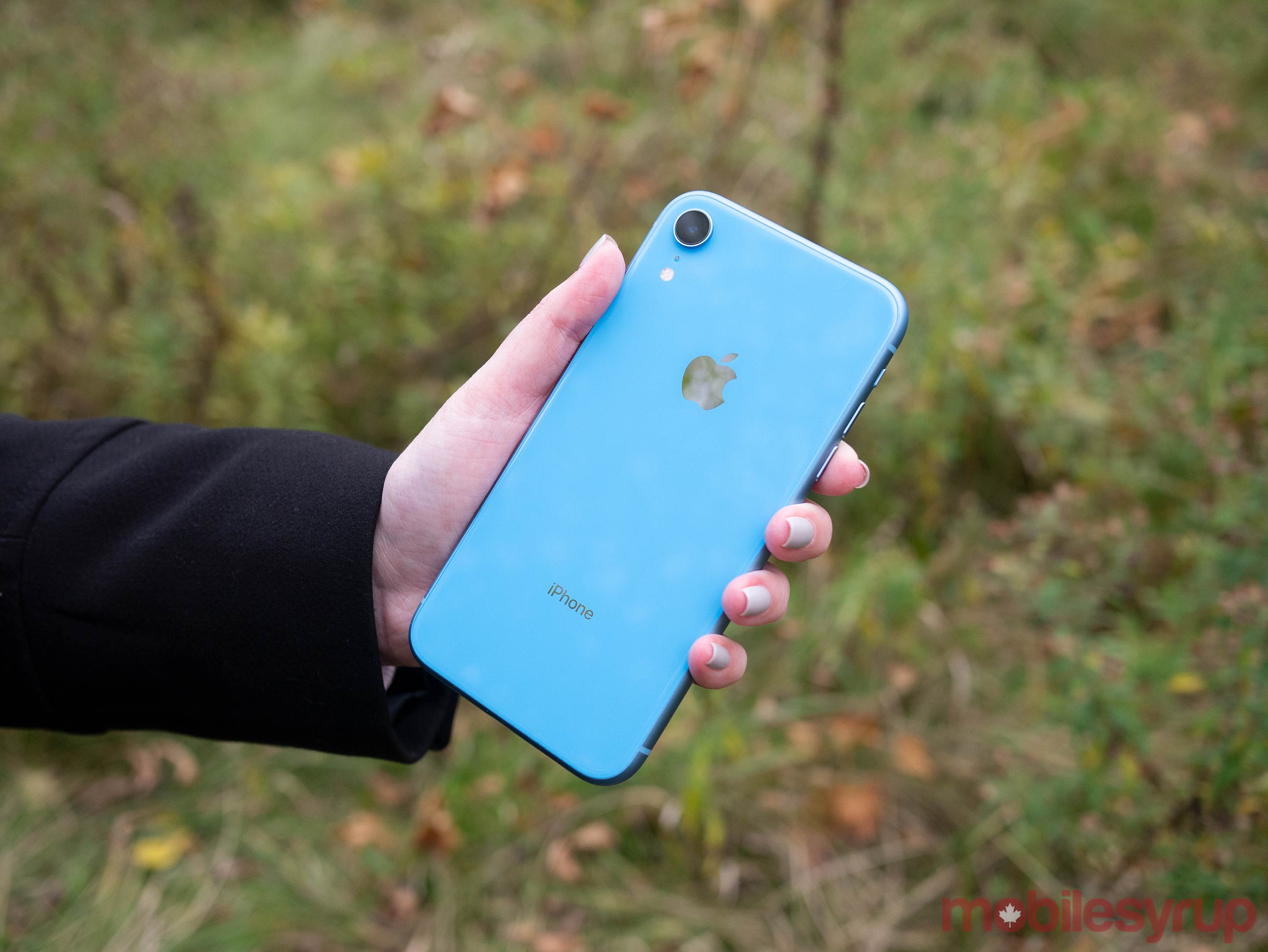
I understand those that take issue with how the notch interrupts the continuity of the smartphone’s display, mainly when watching content on YouTube, but I’m fine with this compromise given how convenient Face ID is (more on this later).
Weight-wise, the iPhone XR measures in at 194g, with the XS Max coming in at 208g and the XS weighing in at 177g. While the XR does have weight to it, the phone doesn’t feel particularly hefty. Some people I’ve handed the phone to over the last few days have commented on the XR feeling thicker when compared to the XS or XS Max.
While I initially experienced similar feelings, the size difference comes down to just a few millimetres, with the XR’s glass rear panel being raised slightly higher than the XS or XS Max’s backing.
Overall, the XR is a sleek looking device that feels like a new take on the design direction Apple first moved the iPhone line in with the launch of the iPhone X back in 2017.
There are subtle differences between the iPhone XR and XS when it comes to design, but in particular comparison to the relatively cheap feeling iPhone 5C, the XR still evokes the look and feel of a premium smartphone despite its entry-level position in Apple’s lineup.
Mostly high-end specs
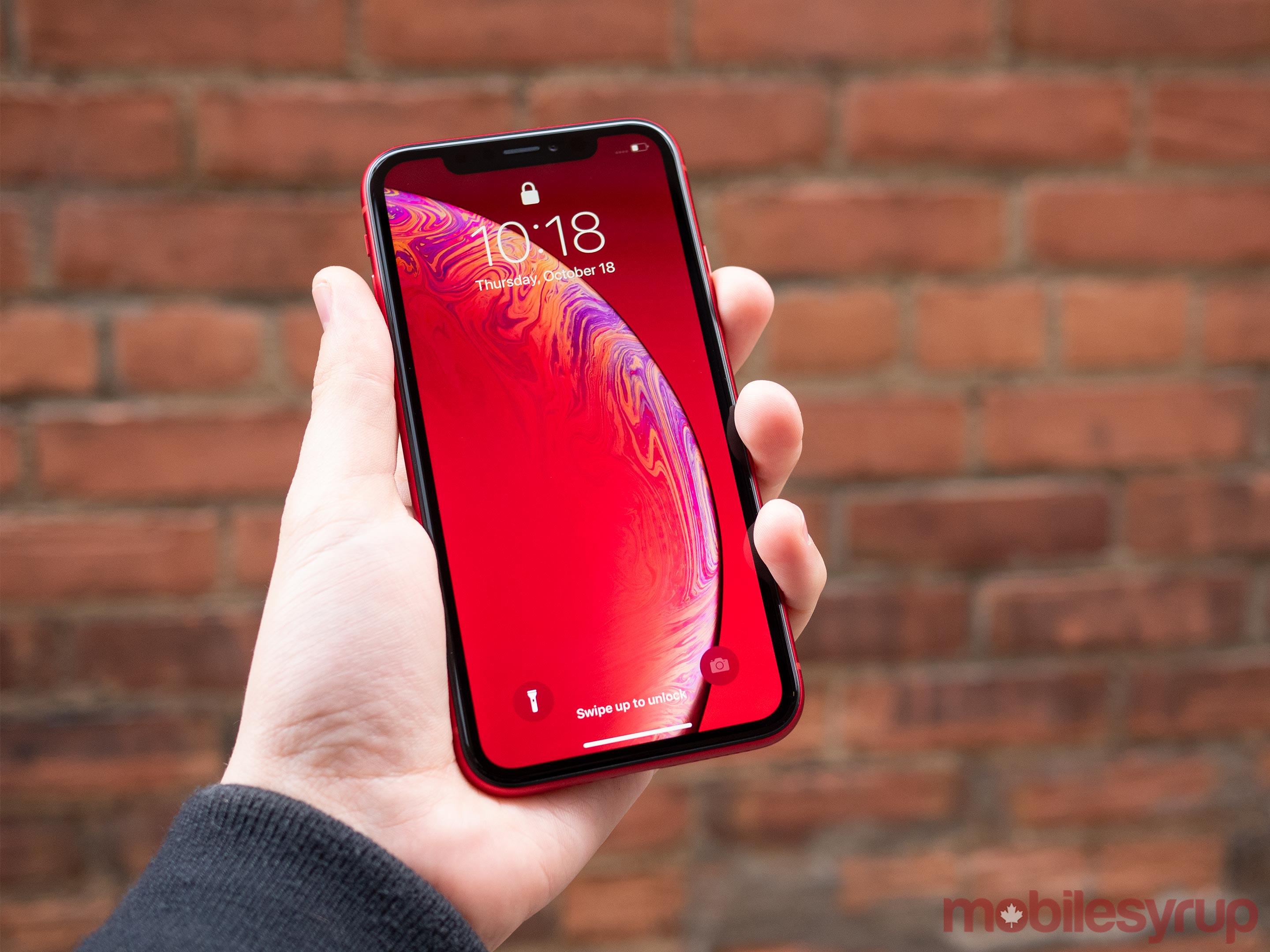
Given that the iPhone XR includes a notch, this also means that the device features minimal bezels, coupled with the smartphone’s 6.1-inch sub-1080p 1,792 x 828 pixel ‘Liquid Retina’ LCD screen.
The thin black bezels that run around the edge of the XR’s display are slightly larger than the iPhone XS and XS Max’s, though only by a few millimetres. I took note of this subtle bezel size shift almost immediately, but most people likely won’t notice it.
In comparison, the iPhone XS Max’s 6.5-inch display features a screen resolution of 2,688 x 1242 pixels, while the iPhone XS’s 5.8-inch screen has a resolution of 2436 x 1126 pixels. This means that the XR’s display size falls squarely in the middle of Apple’s modern smartphone lineup.
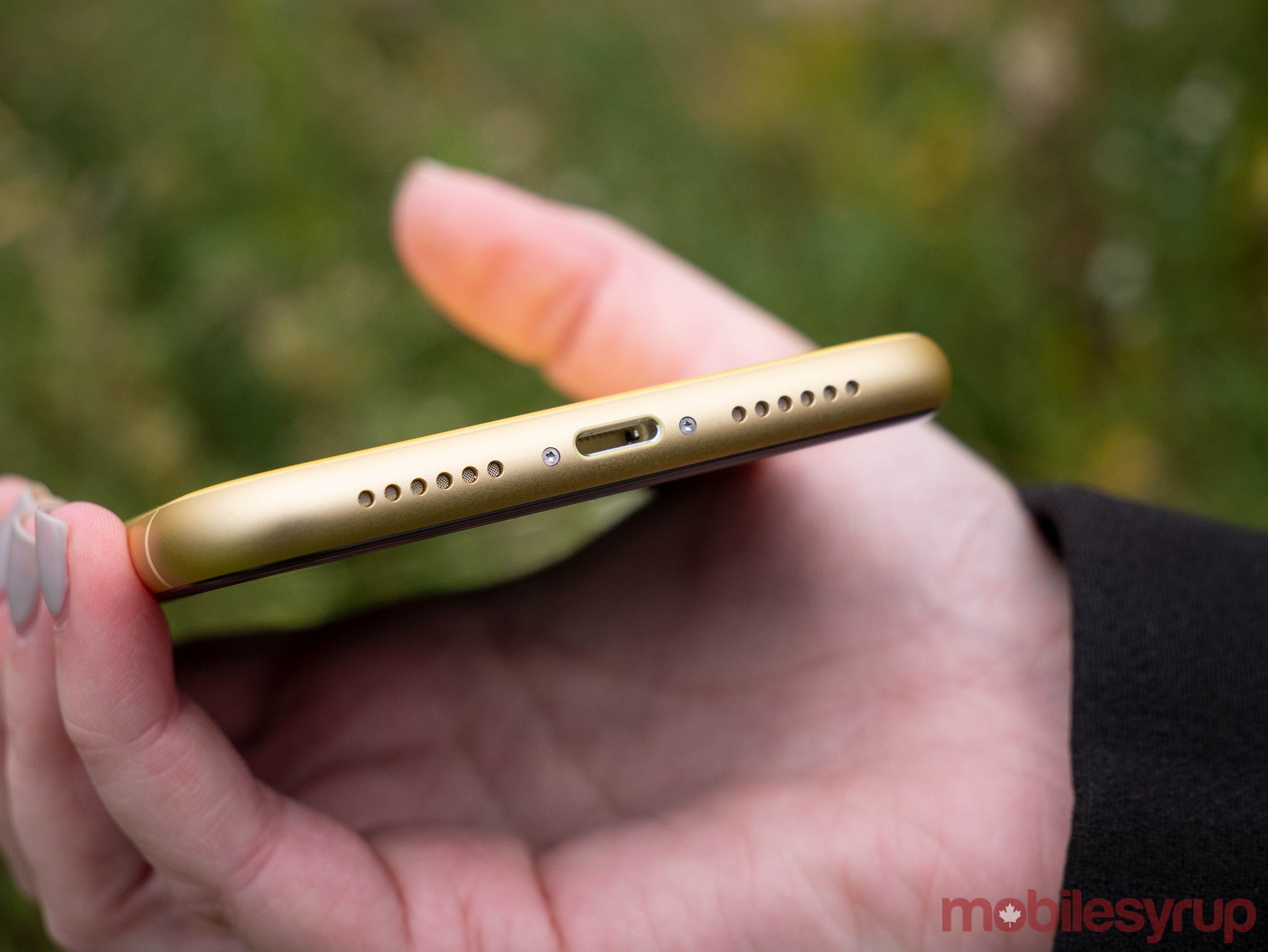
While I was initially disappointed with Apple’s decision not to increase the XR’s display from 326ppi, the same pixel density as the iPhone 8 — especially given that even older Android phones typically feature 1920 x 1080 pixel resolution screen — the resolution discrepancy quickly faded into the background when it came to my experience with the phone.
Before you break out the pitchforks, hear me out: Apple’s true-to-life colour recreation and overall display vibrancy is definitely at play here with the XR, resulting in a screen that’s bright, vibrant and a joy to look at. In fact, I’d even go so far as to say that if I didn’t know XR’s display was an LCD panel, I would have assumed it was an OLED one — it really does look that impressive.
That said, the XR’s screen does not include support for HDR10 like the iPhone XS.
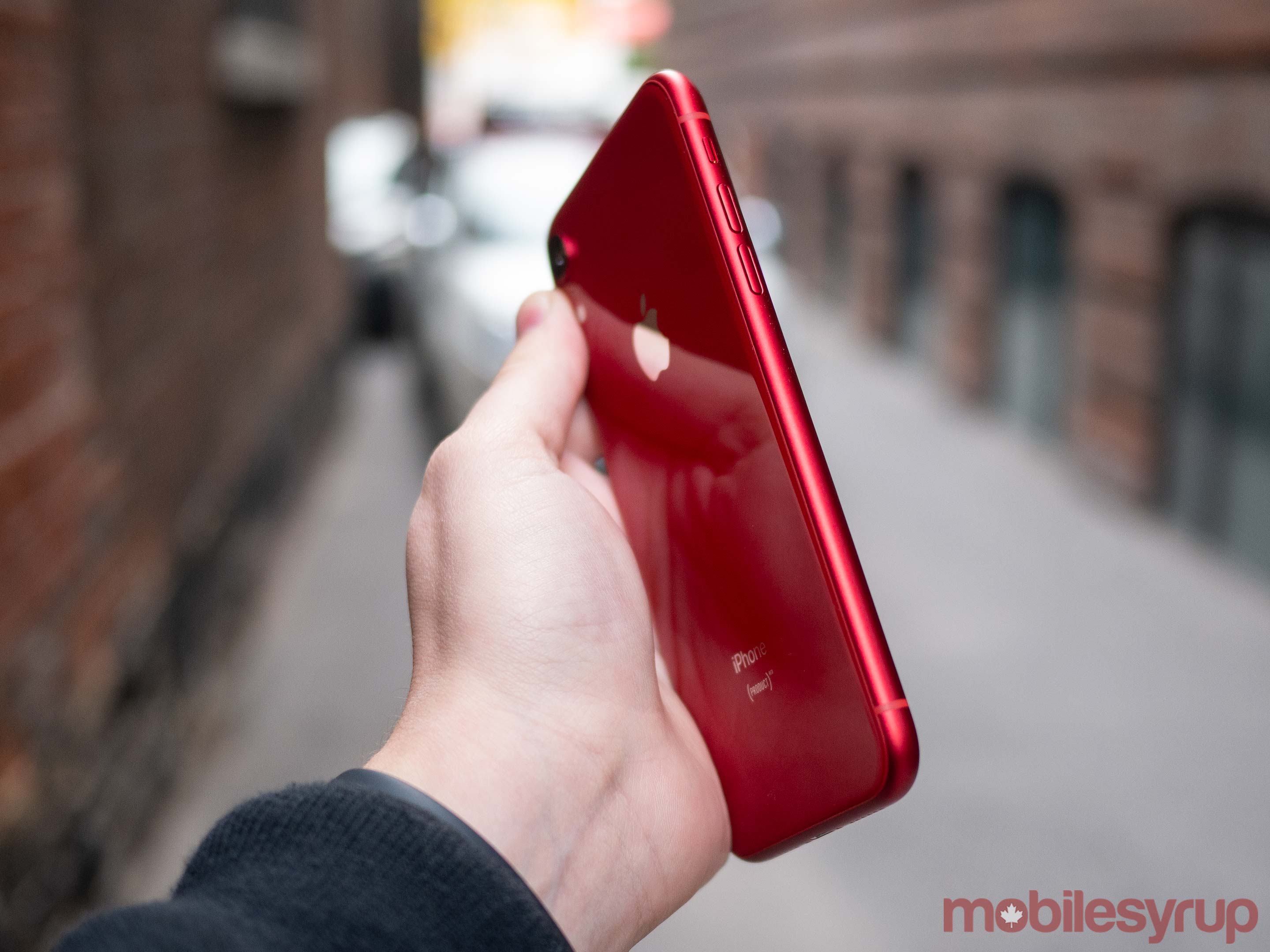
This brings us to one of the most significant differences between the XS and the XR. Rather than the modern OLED display technology that has become standard in high-end smartphones, the XR includes an LCD screen that features what Apple calls sub-pixel anti-aliasing, accomplished through a combination of hardware and software.
This allowed Apple to create the smartphone’s notch as well as the display’s curved corners.
For many, the sub-1080p resolution of the iPhone XR’s display will be a deal breaker, though given the audience Apple plans to target with the device, I doubt this will end up being a problem most people will even be aware of, let alone notice when the phone is in their hand.
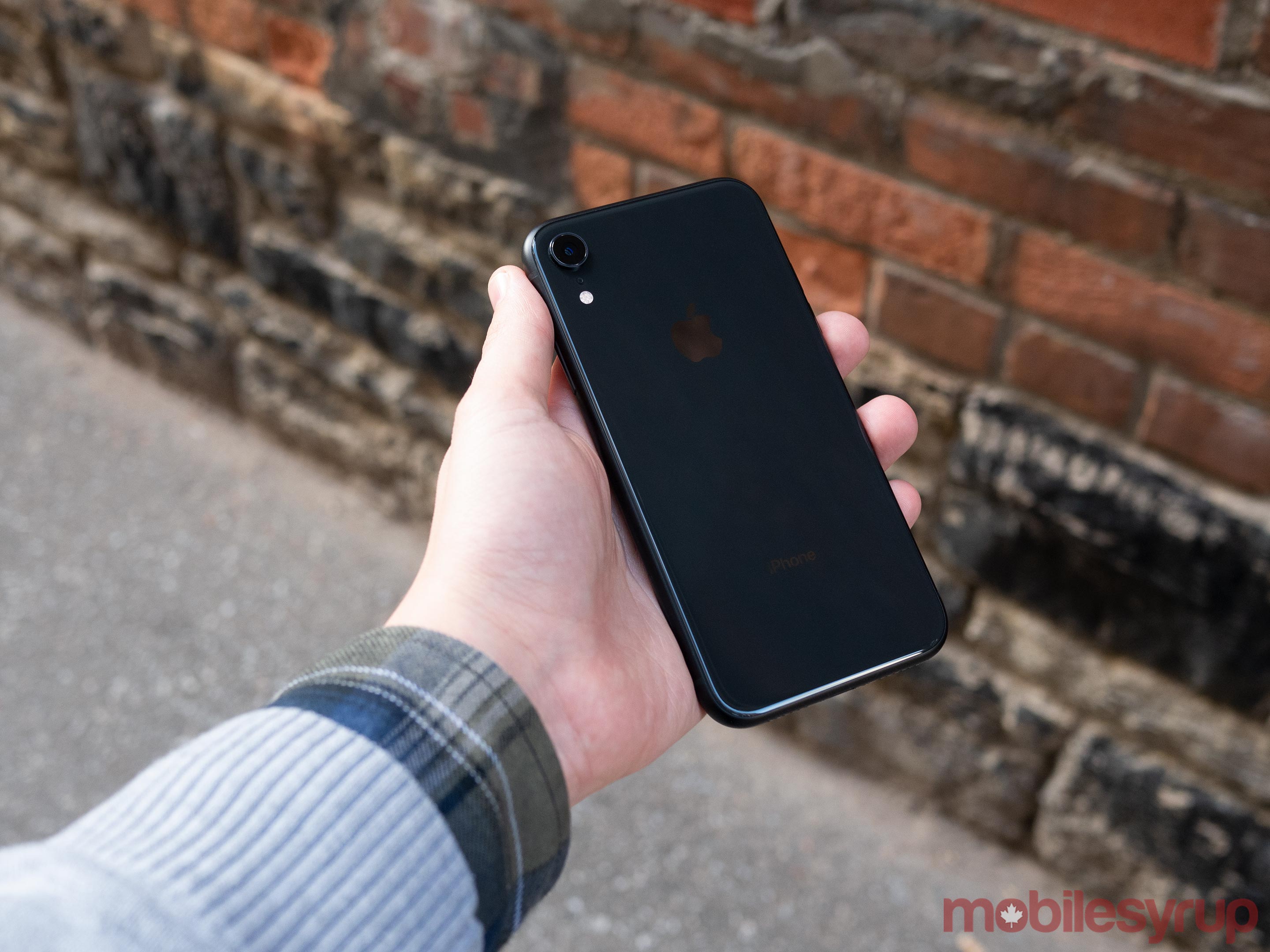
Further, the XR features Apple’s True Tone display technology that utilizes a light sensor to balance the phone’s on-screen colour temperature to match the ambient light surrounding it.
Since True Tone’s introduction with the iPad Pro, I’ve grown fond of this feature and find it useful when I’m reading or watching content on my phone before going to bed.
True Tone results in the display being easier on my eyes in specific circumstances.
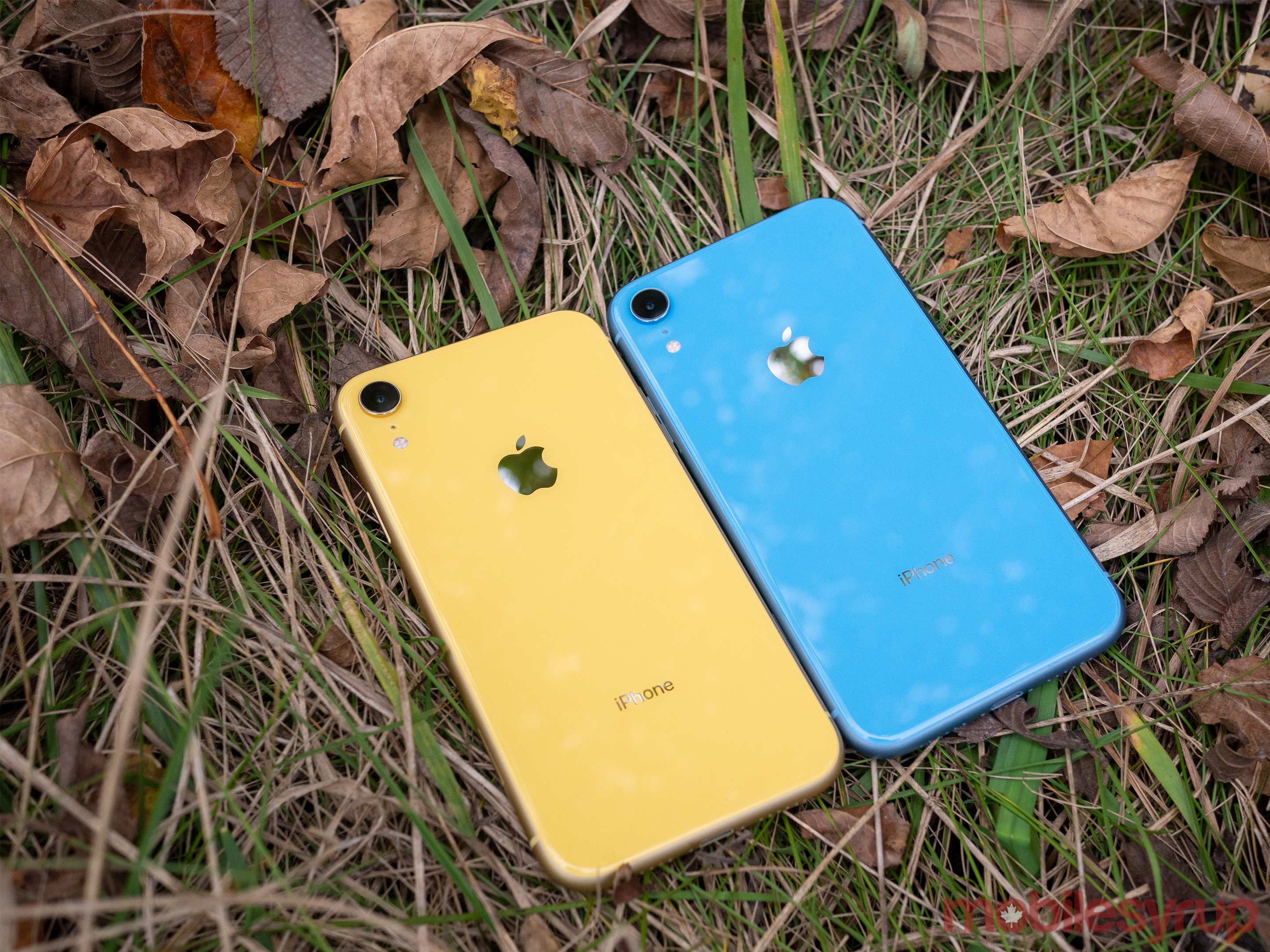
The XR also includes Apple’s A12 processor, the same silicon powering the iPhone XS and the iPhone XS Max.
Apple says that the A12 Bionic features up to 50 percent faster GPU performance, 15 percent faster performance cores and also includes up to 50 percent lower power usage, when compared to last year’s A11 chip.
Regarding performance, my overall experience with the XR has been smooth, just like it was with iPhone XS.

I ran benchmarks on the device, though have never put much stock in the results of these tests when reviewing a smartphone. You can view the Geekbench screenshots above, but the XR is rated above the 10.5-inch iPad Pro, iPhone 8/iPhone 8 Plus and even the iPhone X in both single-core and multi-core performance.
It’s also worth noting that the XR features 3GB of RAM in comparison to the iPhone XS’ 4GB, though I haven’t found this has limited the smartphone’s ability to multitask smoothly.
Some will also be disappointed to learn that the iPhone XR doesn’t feature 3D Touch, which allows users to access specific features in apps by applying slightly more pressure. Admittedly this is a feature I haven’t really used since it was first added to Apple’s smartphone back with the iPhone 6s.
With the XR, in place of 3D Touch is haptic feedback that feels similar to what powers the trackpad in Apple’s MacBook laptops. This haptic feedback is only active when accessing core settings from iOS’ drop-down menu.
While I didn’t run formal tests, the iPhone XR’s battery life has been impressive in my experience, coming in a complete day thanks to its lower-resolution display.
Finally, the XR also features IP67 water and dust resistance, with Apple stating the smartphone is rated to be submerged in water of 1 meter for 30 minutes.
Single-camera system
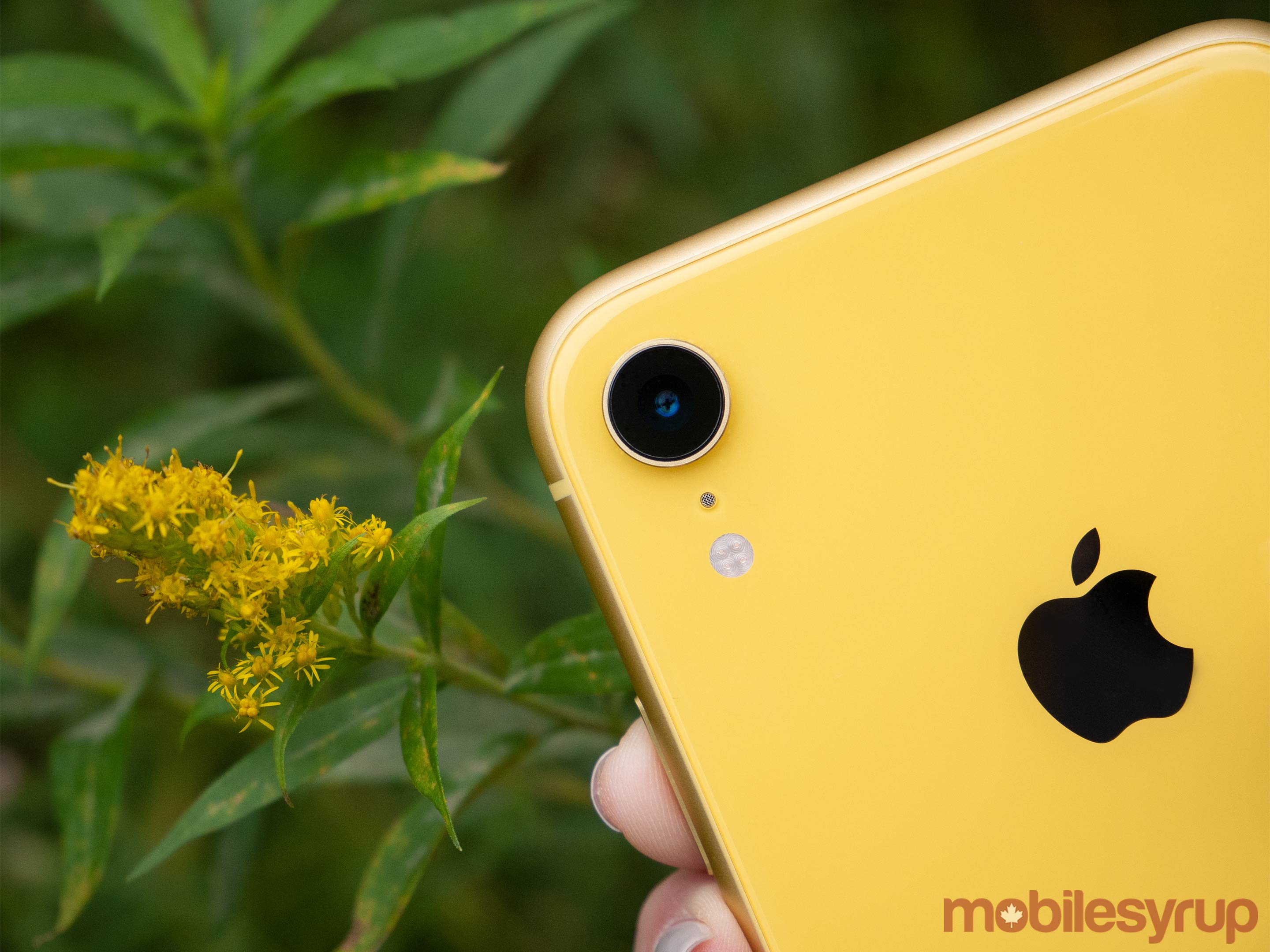
While my experience with Face ID and the iPhone XR’s 7-megapixel f/2.2 front-facing camera module has been identical to the iPhone XS when it comes to authentication speed and consistency, the single rear camera setup tells a slightly different story.
The iPhone XR’s lone rear 12-megapixel wide-angle shooter with a 26mm f/1.8-angle lens and optical image stabilization — the same camera tech featured in the iPhone XS’ wide-angle shooter — is surprisingly impressive, even when it comes to Portrait Mode.
Smart HDR, a feature first introduced to Apple’s iPhone line with the XS, is back once again with the XR. This means that while colour fidelity and low-light performance is improved, the off-putting ‘face smoothing’ effect Apple says is a result of the camera’s advanced HDR computational photography technique, returns.
Thanks to Apple’s Neural Engine, a buzzword the tech giant has used frequently leading up to the XS’ release and now the XR, the smartphone’s single-camera setup is capable of creating a sophisticated digital depth-of-field effect, which is sometimes referred to as bokeh.
The subject skin smoothing that’s rampant with the iPhone XS is still present with the iPhone XR’s shooter, though it is more subtle. That said, this is an issue Apple says it plans to fix with its upcoming iOS 12.1 update. There’s also a greater level of contrast in the XS’ shots when compared to the primarily software-powered iPhone XR’s Portrait Mode.
Overall, however, Portrait Mode photos typically still look great and to my surprise aren’t over-processed like similar images shot with Samsung’s flagship devices.
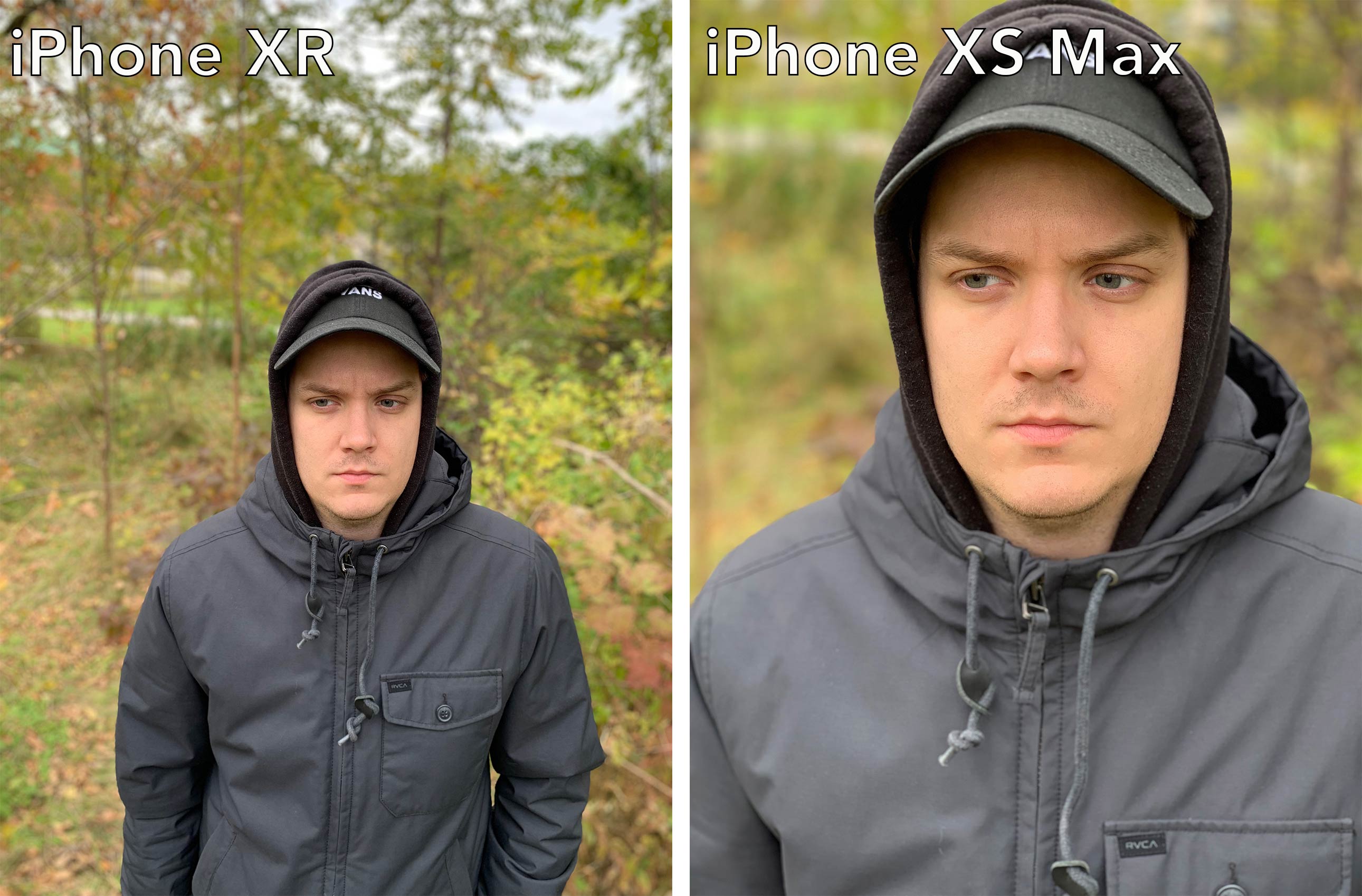
The iPhone XR Portrait Mode shot is on the left and the iPhone XS Max Portrait Mode image is on the right. Both photos were shot from the same distance.
I’d even go so far as to say that Portrait Mode sometimes looks better when shot with the iPhone XR in comparison to the XS. It also seems less finicky to set up and get the correct angle and distance for the feature to work, though the resulting image is typically more zoomed out when compared to the XS’ Portrait Mode.
Other iPhone XS photography features also make a return in the XR, including post-production depth-of-field control and Portrait Lighting, a feature that I don’t use very often but that has proven to be popular among many iPhone users.
Post-production and live Portrait Lighting settings are limited to ‘Natural Light,’ ‘Studio Light’ and ‘Contour Light’ when shooting with the XR’s rear-facing camera, while the iPhone XS allows users to select from ‘Studio Light,’ ‘Contour Light,’ ‘Stage Light,’ and ‘Stage Light Mono,’ both live and in post.
![]()
All three image are shot in Portrait Mode. First is the iPhone XR, second is the iPhone XS Max and third is the Google Pixel 3 XL. All images were taken from the same distance.
The XR’s selfie camera, however, functions the same as the XS’ front-facing shooter, with ‘Natural Light,’ ‘Studio Light,’ ‘Contour Light,’ ‘Stage Light’ and ‘Stage Light Mono’ lighting options being available live and in post-production.
The XR also still works with Animoji and of course Memoji. The silly but technically impressive features perform just as well as with XR as they do with the XS and XS Max.
I do, however, miss the iPhone XS and XS Max’s 2x zoom functionality, which first made its way to the iPhone with the iPhone 7 Plus.
Still, it’s impressive Apple has managed to take advantage of remarkable software trickery to recreate most of the iPhone XS’ key camera features with the absence of the additional 12-megapixel f/2.4 rear camera, all without a significant drop in image quality.
In short, I could easily get by with the XR’s lone rear-facing shooter and generally be completely satisfied, with 2x zoom being one key feature I’d miss.
Update 23/10/2018 12:15pm ET: The review has been updated with information related to Apple’s plans to fix the iPhone XR’s and iPhone XS’ photography skin-smoothing issue with iOS 12.1.
Who is the XR for?
While the XR's $750 USD price tag is impressive in the U.S., Canadians are stuck with a considerably more expensive phone. The 64GB iPhone XR comes in at $1,029, while the 128GB version costs $1,099 and the 256GB iteration is priced at $1,239.
This means that you could pick up the Pixel 3, arguably among the best Google's Android operating system has to offer currently, at $999 for the 64GB version, or even the 64GB Pixel 3 XL at $1,129. Both phones' feature technical specs that, apart from Apple's A12 processor, are arguably more impressive than what is featured in Apple's iPhone XR.
The XR isn't being positioned as the smartphone that will convince hardcore Android fans to jump ship. The handset is designed for Apple users that want access to the iPhone X, iPhone XS and iPhone XS Max's most notable features, but that don't want to spend the money for Apple's top-tier iPhone.
The smartphone's colourful variants will go a long way towards attracting the average consumer, despite what some people may think of the new handsets bright, inviting colours.
Anyone I've shown the XR to has marvelled at its colour, sleek design and photography feature set, rather than scoff at the smartphone's 720p display.
The iPhone XR is set to be available in-store across Canada on Friday, October 26th.
"The handset is designed for Apple users that want access to the iPhone X, iPhone XS and iPhone XS Max's most useful and eye-catching features, but that don't want to shell out the money for the company's top-tier devices"
MobileSyrup may earn a commission from purchases made via our links, which helps fund the journalism we provide free on our website. These links do not influence our editorial content. Support us here.

